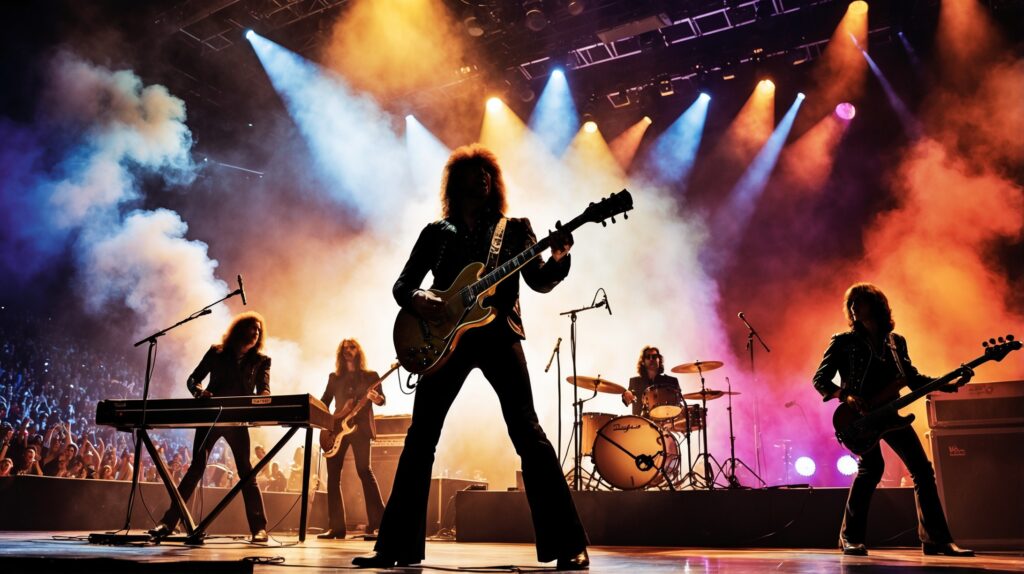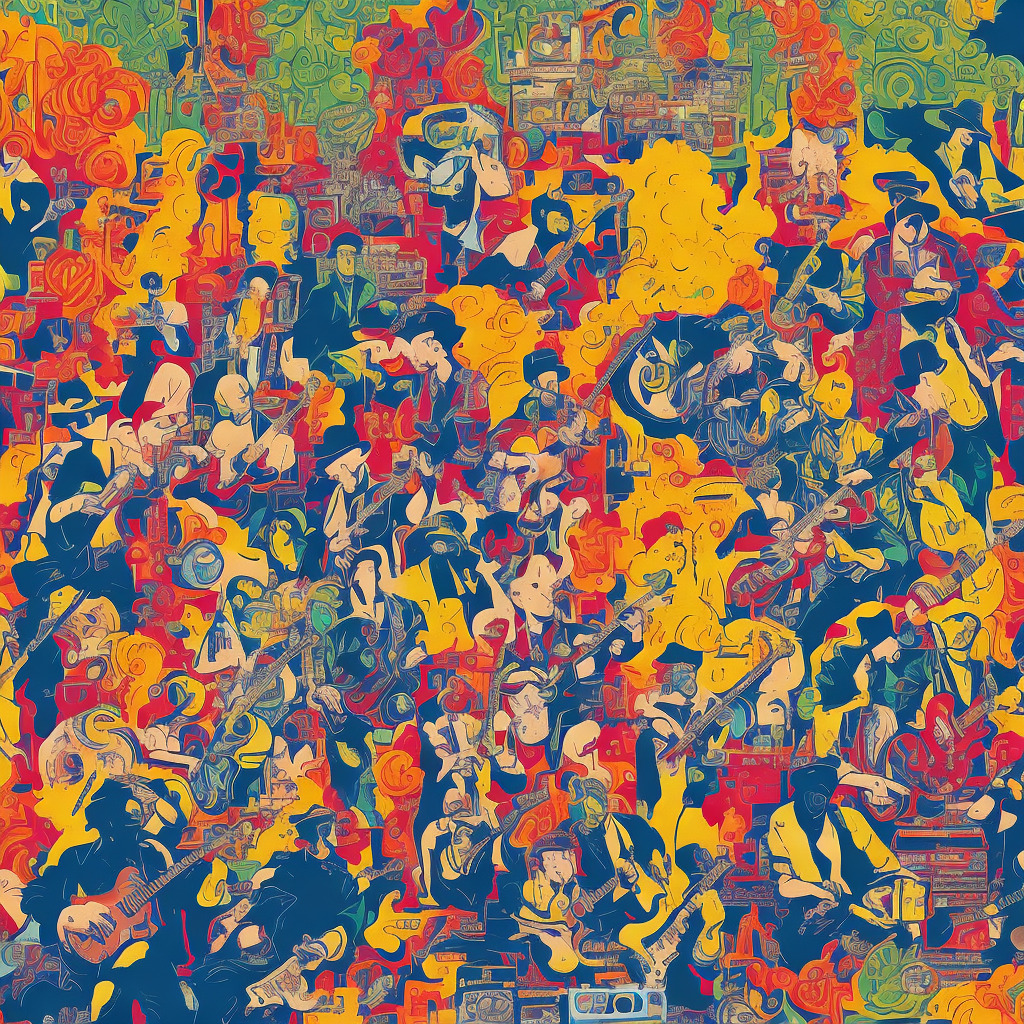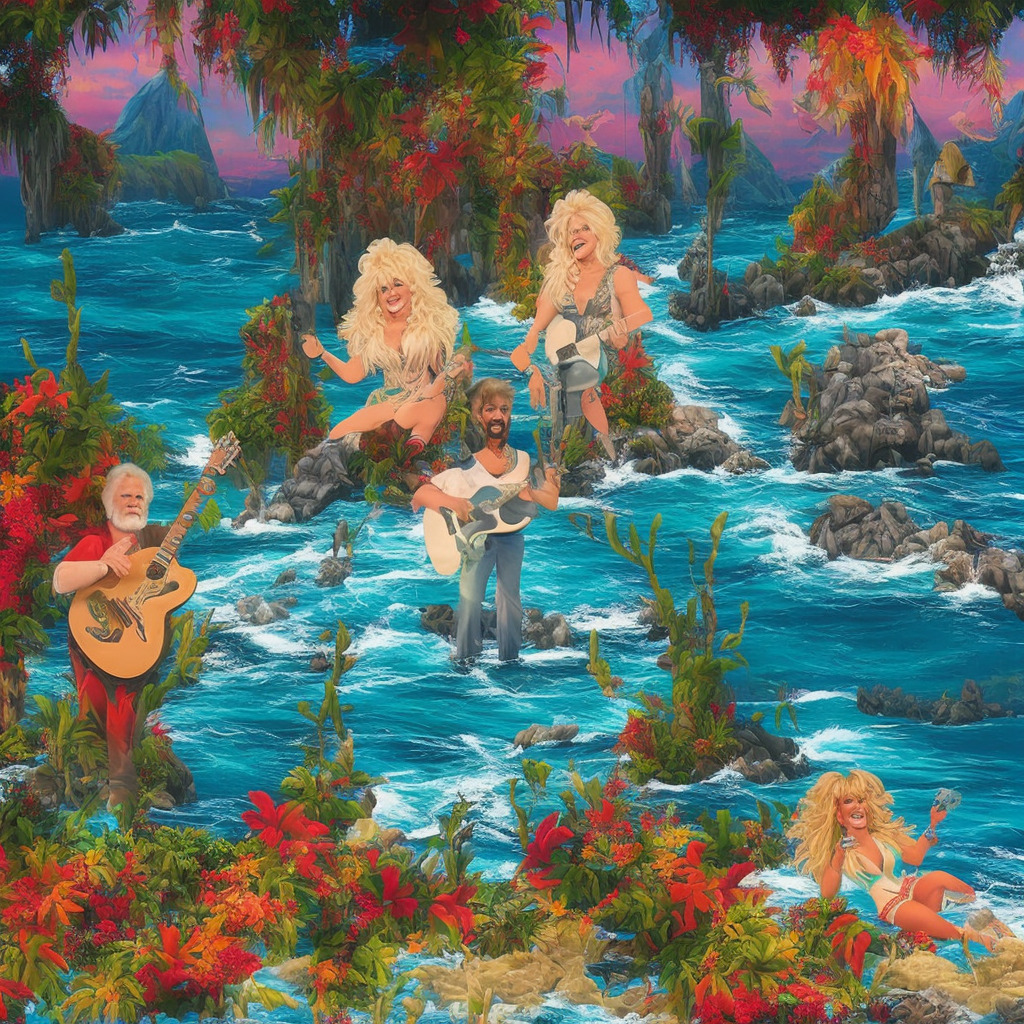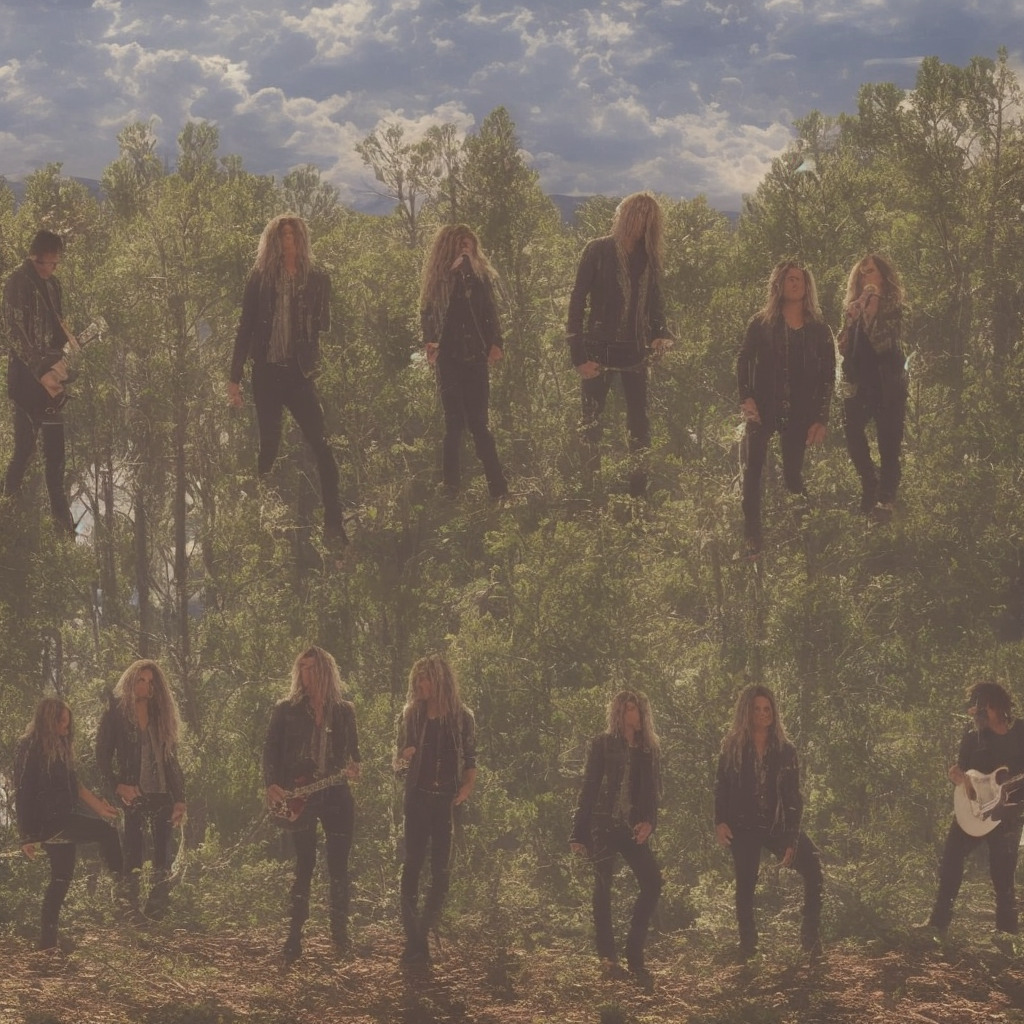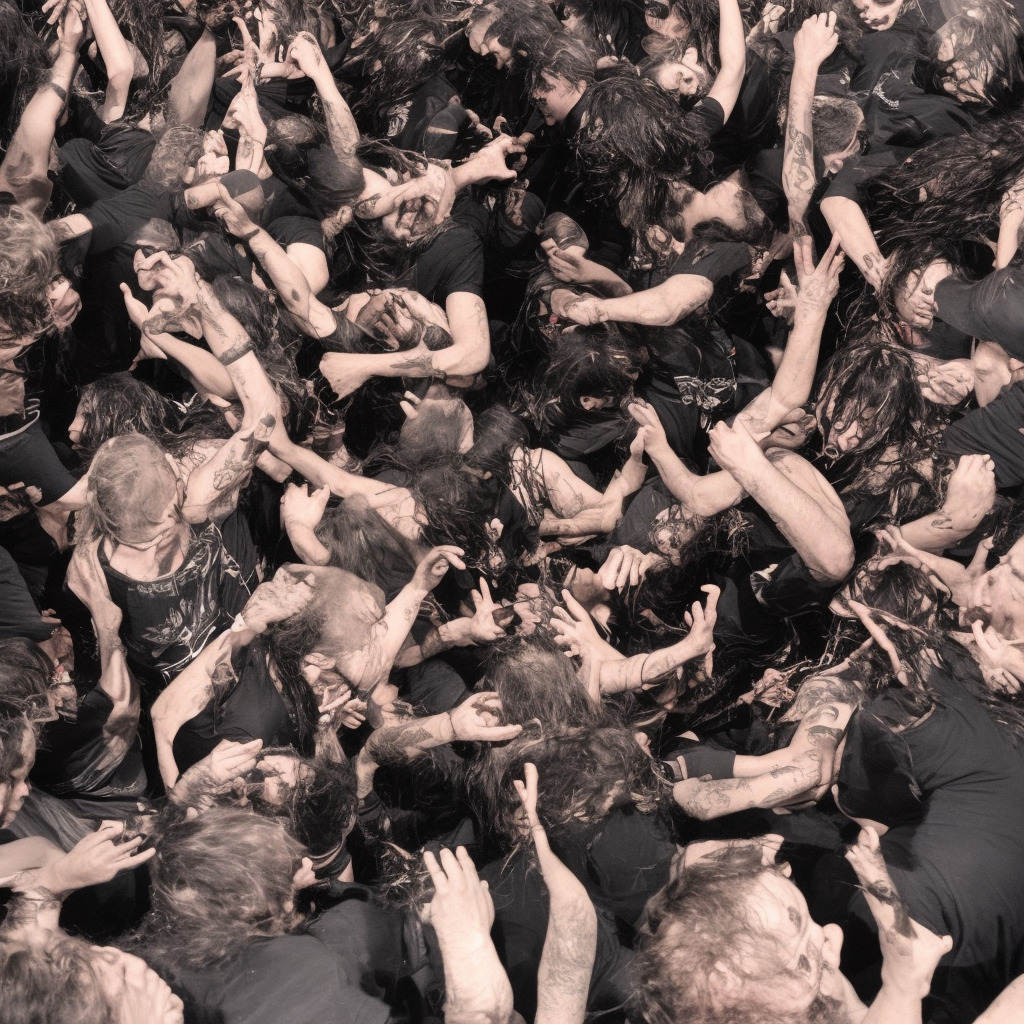Deep Purple: The Architects of Rock
Explore the roots of Deep Purple and their journey to becoming rock legends, with a focus on their iconic track, “Smoke on the Water.” From their early beginnings to the pivotal moments that shaped their sound, delve into the story of the band that redefined hard rock.
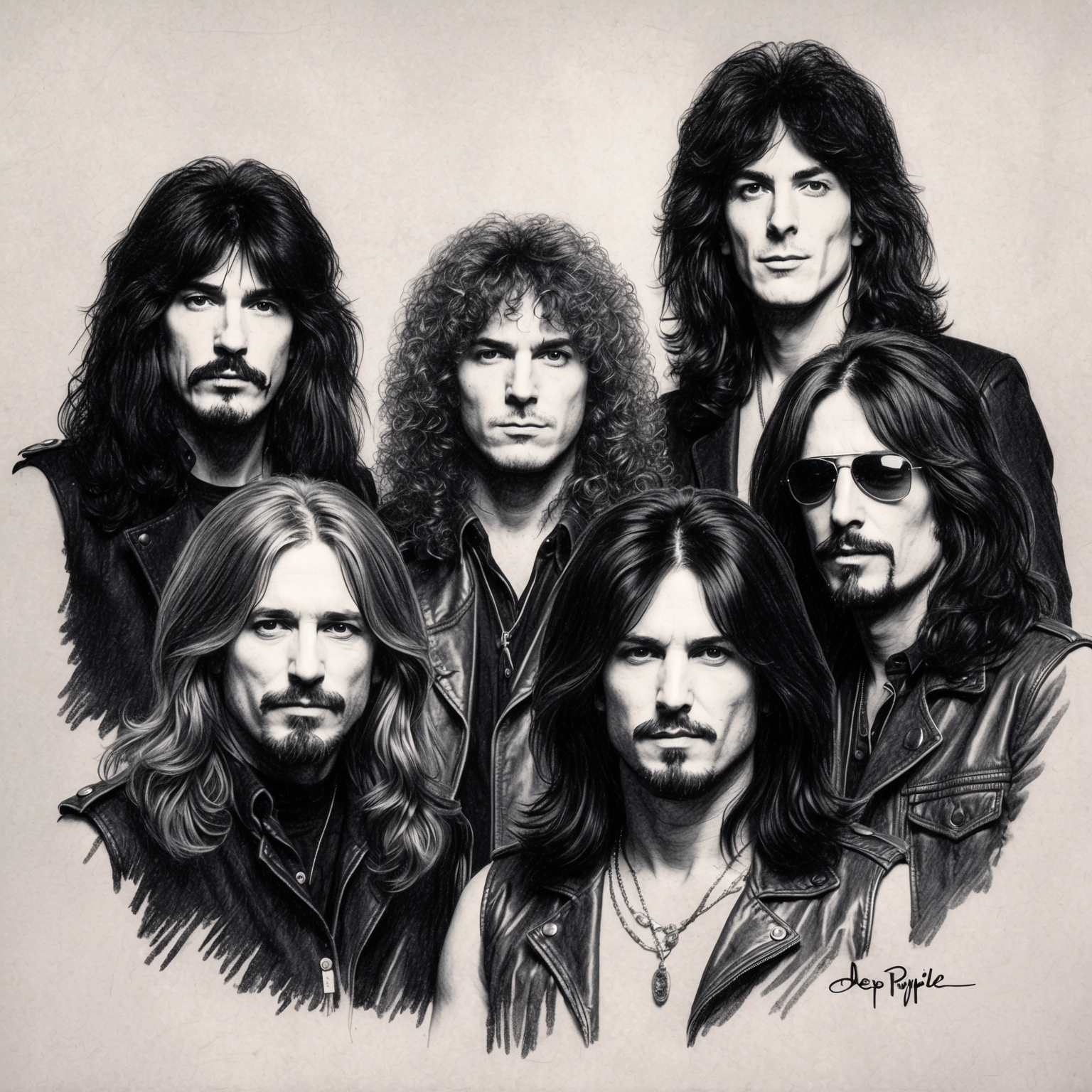
Formed in 1968, Deep Purple swiftly became one of the pioneering forces in hard rock and heavy metal, leaving an indelible mark on the music landscape. Known for their virtuosic musicianship and electrifying live performances, the band quickly gained a reputation as both innovative and provocative. Their song “Smoke on the Water” is often considered the quintessential Deep Purple track, showcasing their knack for unforgettable riffs and epic storytelling, which reverberated through the music of the early 1970s.
The origins of Deep Purple can be traced back to Hertford, England, where the talents of founding members Ritchie Blackmore, Jon Lord, Ian Paice, Nick Simper, and Rod Evans converged. Over the years, the band’s lineup has evolved, with pivotal contributions from members like Ian Gillan and Roger Glover during the peak periods of their career. Each member brought a unique flair, ensuring the band’s sound remained fresh and exciting. Their collaboration on “Smoke on the Water” immortalized them in rock history, as it was a byproduct of their synergy and shared creative vision.
When “Smoke on the Water” was released in 1972, it was during an era when the music scene was brimming with experimentation and innovation. The band’s ability to blend classical influences with rock created a heavy, appealing sound that resonated with audiences worldwide. The backstory of the song’s creation, from the infamous recording session in Montreux to the fateful fire that inspired its lyrics, provides a glimpse into the fascinating and often unpredictable journey of Deep Purple. Their partnership with producers and engineers was crucial, helping to refine that perfect riff into the timeless masterpiece we cherish today.
Crafting Rock History: The Minds Behind “Smoke On The Water”
The composition of ‘Smoke On The Water’ is a collaborative effort by Deep Purple’s members—Lord, Blackmore, Gillan, Glover, and Paice—combining their diverse musical backgrounds to craft a rock classic.
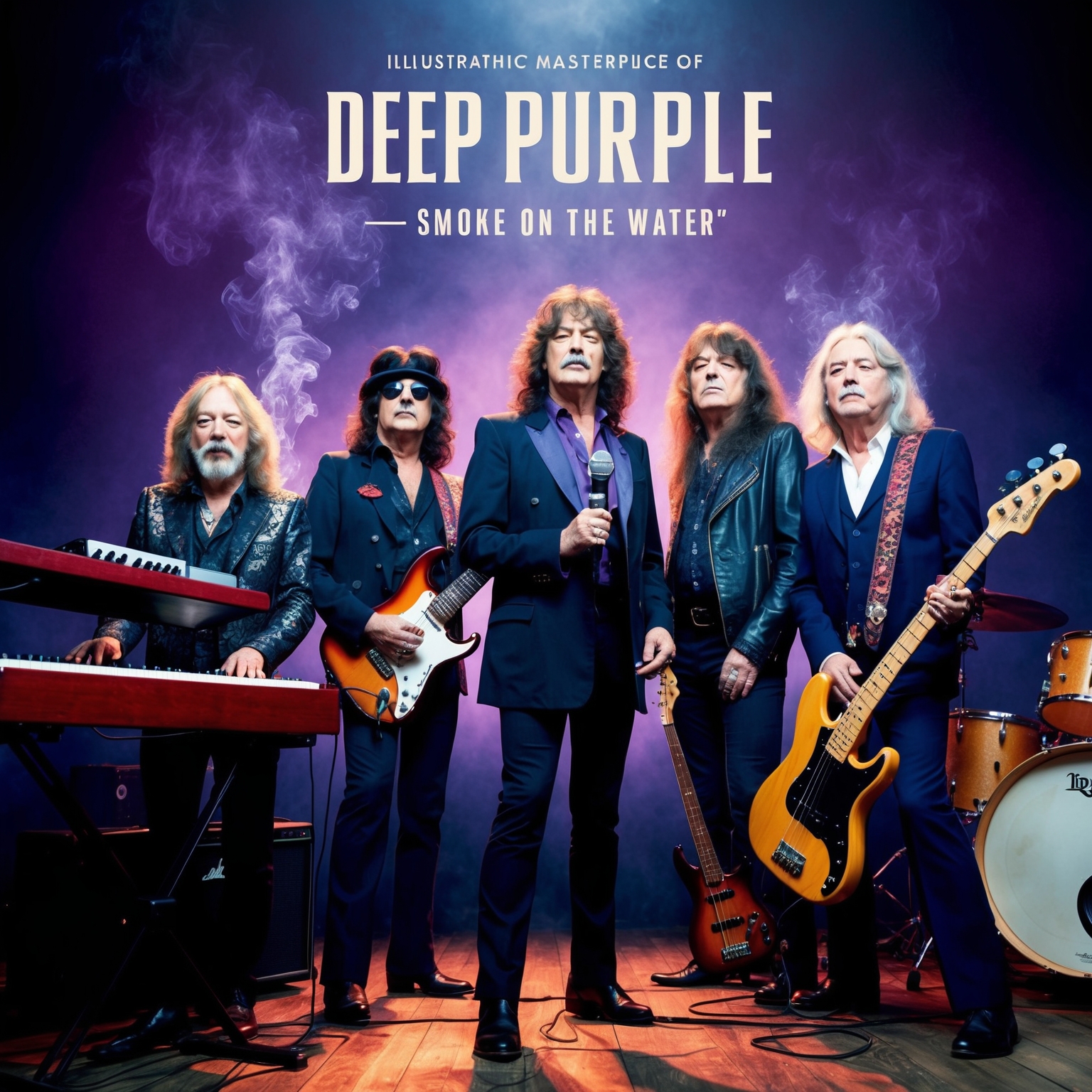
“Smoke On The Water,” a hallmark of rock music, owes its legendary status not just to Deep Purple’s passionate delivery but also to the stellar composition skills of the band members who crafted this iconic tune. The driving forces behind this anthem are Jon Lord, Ritchie Blackmore, Ian Gillan, Roger Glover, and Ian Paice. Their combined prowess brought this song to life, each bringing distinct musical expertise and influences.
Hailing from England, Deep Purple’s composers were a blend of cultivated talent and raw rock sensibility. Jon Lord, a classical piano prodigy, infused the band’s sound with his deep knowledge of musical theory and orchestral arrangements. Ritchie Blackmore, famously recognized for his guitar wizardry, added a blend of blues and progressive rock, creating guitar riffs that would resonate through generations.
The fusion of these talents was pivotal in shaping “Smoke On The Water.” Each member brought their unique style; Gillan’s powerful vocals merged seamlessly with Glover’s driving bass lines and Paice’s dynamic drumming. The collaboration of these composers not only defined the structure and feel of the track but elevated it to a timeless masterpiece, ensuring its place in rock history.
Celebrating a Rock Classic: Recognition and Influence
Explore the far-reaching influence of Deep Purple’s ‘Smoke on the Water,’ from its celebrated covers to its appearances in popular media.

Smoke on the Water by Deep Purple is not just a song; it’s a rock anthem that has carved its place in music history. Although the song itself didn’t bag any prestigious awards immediately upon release, its influence and significance have been recognized over time. Rolling Stone magazine has frequently featured it in lists celebrating the greatest songs of all time. The song’s indelible guitar riff alone has earned its place in the Grammy Hall of Fame, recognized for its impact and enduring popularity. In 2007, it found its way into the UK Music Hall of Fame as part of Deep Purple’s overall contribution to the music scene.
One of the most telling measures of a song’s legacy is how often it is covered by other artists. Smoke on the Water has been reimagined by numerous musicians across different genres, paying homage to its iconic status. Renowned artist Carlos Santana delivered a notable cover, adding a Latin rock twist to the classic tune. Metal band Six Feet Under offered a heavier rendition, while the Flaming Lips provided an experimental take, showcasing the song’s versatility and the breadth of its appeal.
Beyond the realm of music, Smoke on the Water has also permeated popular culture. The powerful riff can be heard in various movies, TV shows, and video games, further testifying to its widespread recognition. It has featured in films like ‘School of Rock’ and ‘Casino Royale,’ and it’s even been included in video game soundtracks like ‘Guitar Hero’ and ‘Rock Band,’ cementing its place as a timeless piece of rock history.
Chart Success and Cultural Impact of ‘Smoke on the Water’
Smoke on the Water’ by Deep Purple achieved significant chart success, reaching number 4 on the Billboard Hot 100 in 1973. The song’s cultural impact and memorable guitar riff have contributed to its status as a rock music anthem.
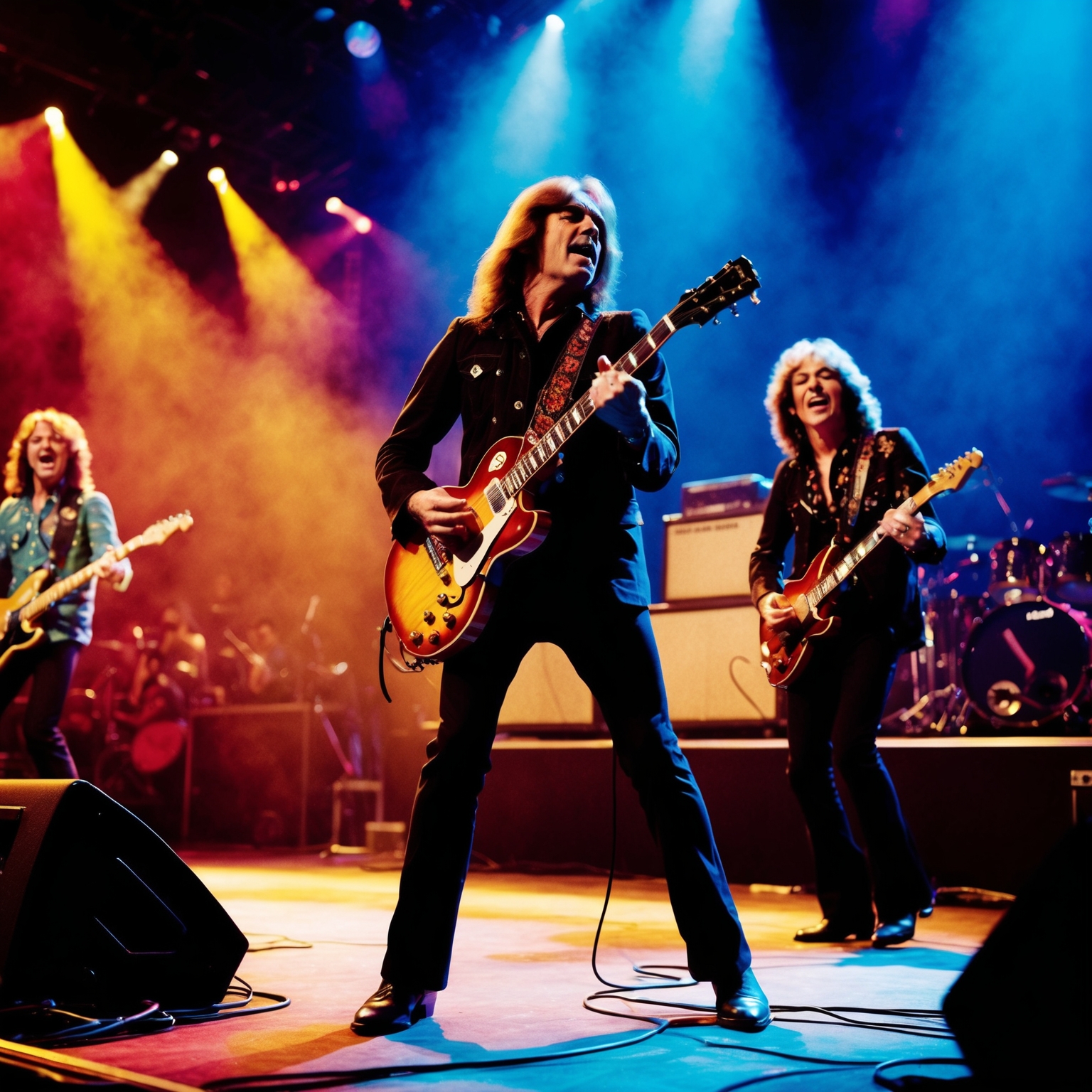
Few songs become synonymous with rock music as ‘Smoke on the Water’ by Deep Purple. Released in 1972, the track is iconic, not merely for its famous riff but also for its impressive chart performance at the time. Upon its release as a single in the United States in May 1973, it peaked at number 4 on the Billboard Hot 100 chart, a remarkable achievement for the band, considering the song’s hard rock genre.
Compared to other tracks on the chart at the time, ‘Smoke on the Water’ stood out, powered by its memorable guitar riff that has since become a rite of passage for budding guitarists worldwide. The song’s success was both a continuation and an amplification of Deep Purple’s music career, further cementing their place in rock history. The band had already seen significant success with previous hits, but it was ‘Smoke on the Water’ that gave them an iconic single known by music lovers across generations.
From a marketing standpoint, the label’s strategy leveraged live performances and radio play to push the song to higher acclaim and popularity. Public and critical reception was overwhelmingly positive, with the song’s storyline capturing imaginations and deeply resonating with audiences, as well as receiving critical acclaim for its narrative and musical prowess. Over the years, the song etched itself into popular culture, becoming an anthem of sorts for rock music enthusiasts and leaving a lasting legacy on the industry.
Exploring the Live Legacy of ‘Smoke On The Water’
Although without a traditional video, ‘Smoke On The Water’ lives through its iconic live performances, capturing the essence of Deep Purple’s raw energy and rock legacy.
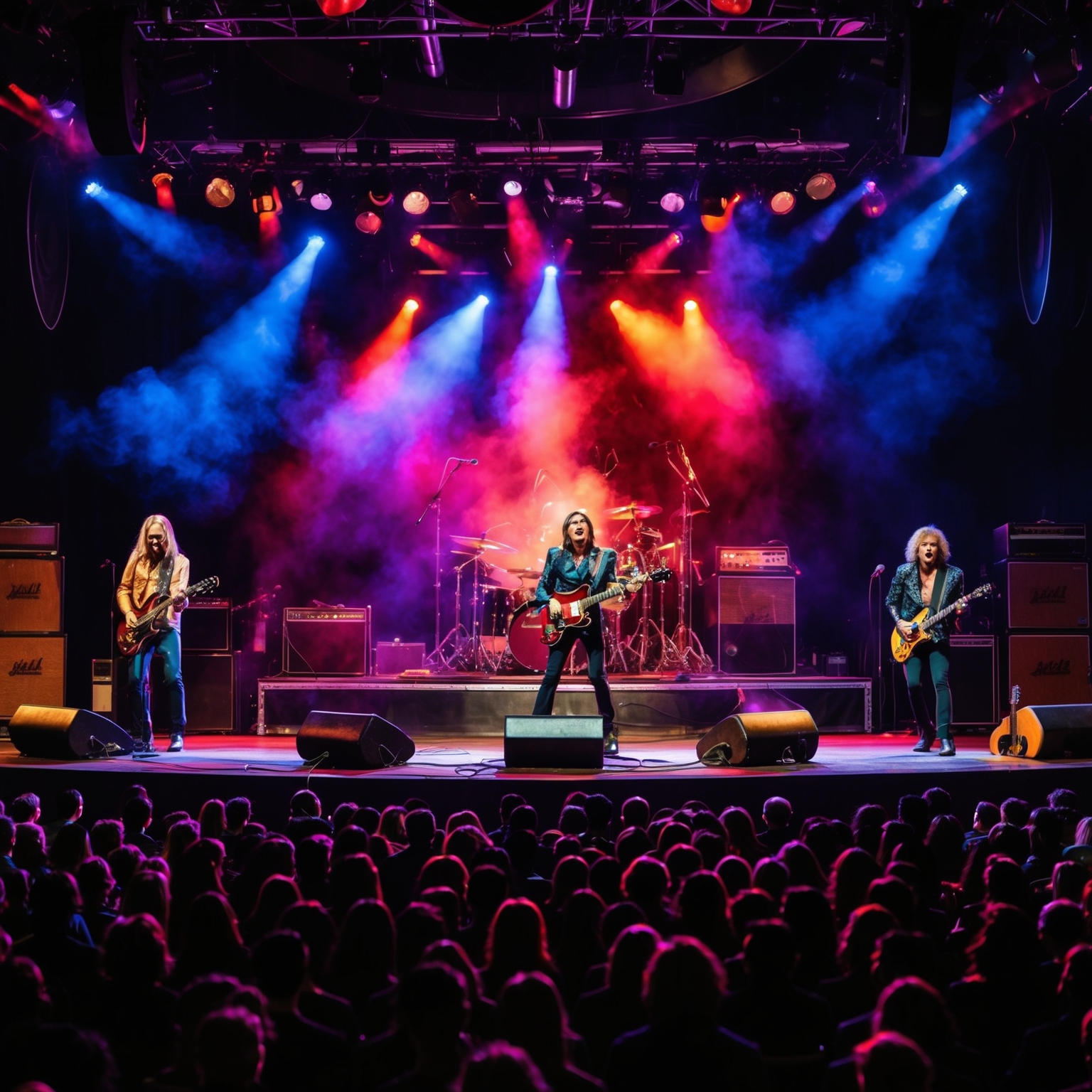
While ‘Smoke On The Water’ by Deep Purple does not have an official music video in the traditional sense, the song’s visuals have been brought to life through numerous live performances. The band’s energetic stage presence and the iconic guitar riff have become synonymous with the track, creating a lasting visual legacy that resonates just as profoundly as any professionally produced music video would. The lack of a traditional music video did not hinder ‘Smoke On The Water’ from reaching iconic status; instead, the live multifaceted renditions have reinforced its timeless appeal, capturing the raw essence of rock ‘n’ roll.
The live performances often feature intense stage lighting, smoke effects, and a band in its element, delivering each note with the intensity and precision that fans adore. Deep Purple’s dynamic interaction with the audience is often highlighted in these performances, showcasing the band’s knack for creating a thrilling rock concert experience. Over the years, several of these live renditions have been recorded and shared widely, gaining millions of views online and continuing to attract new listeners and viewers to Deep Purple’s classic anthem.
Critical reception of these live performances often underscores the authenticity and sheer adrenaline with which Deep Purple brings ‘Smoke On The Water’ to life. Iconic concerts like the one in Montreux, where the infamous inferno incident inspiring the song took place, add another layer of historical depth and authenticity, enticing audiences who crave a glimpse of rock history. These performances are filled with real-time raw energy that a standard music video often cannot convey, keeping the spirit of the song alive through the decades.
The Musical Architecture of ‘Smoke On The Water’
Uncover the musical elements that make ‘Smoke On The Water’ a timeless rock anthem, from its iconic riff and key choice to its structured rhythm and harmonic complexity.
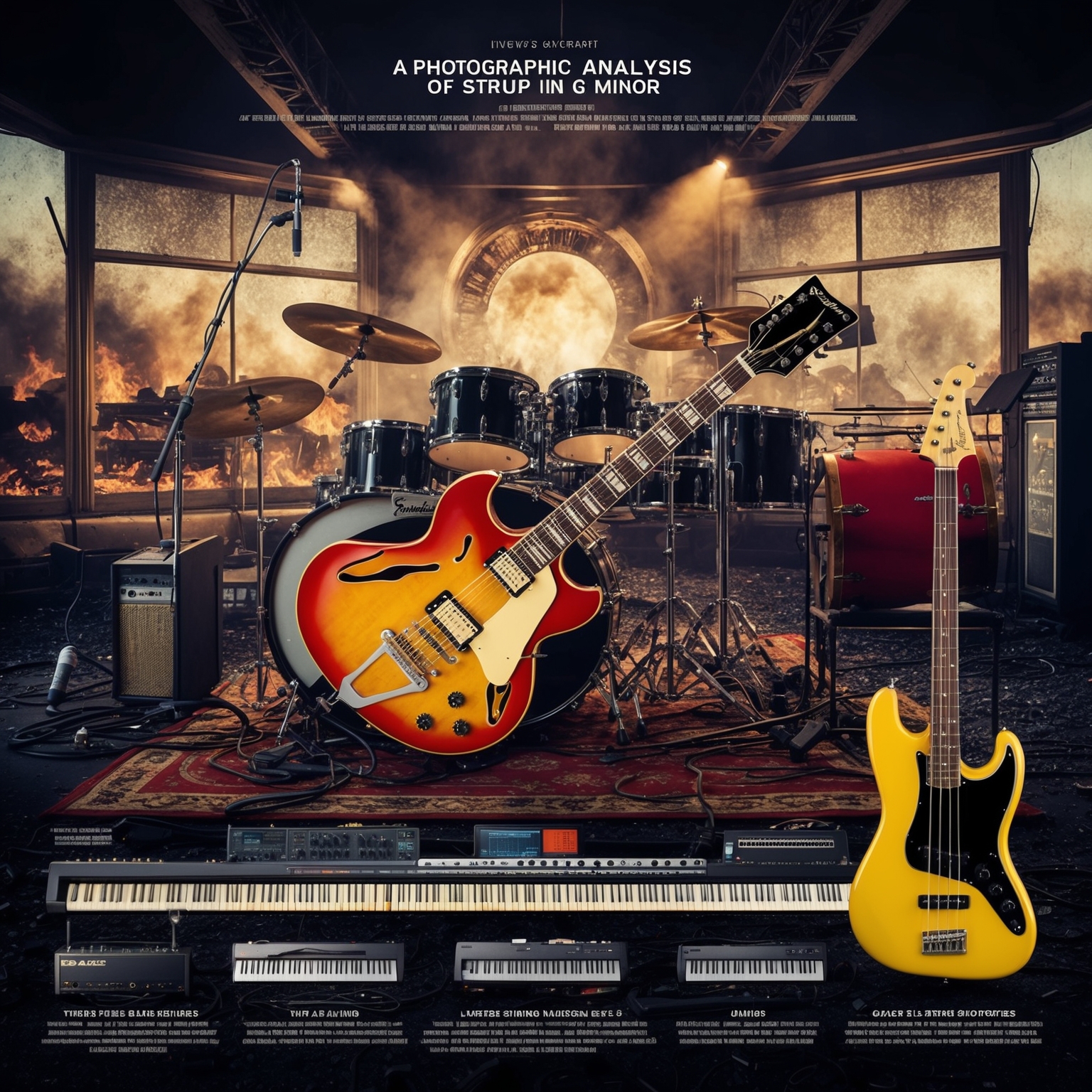
Smoke On The Water is structured using a powerful blend of musical elements that create its iconic sound. The song is predominantly in the key of G minor, which provides a dark and moody backdrop that perfectly complements its legendary riff. This riff, played using parallel fourths, is not just central to the track but serves as its heartbeat, driving its distinctive hard rock energy. The tempo clocks in at a steady 112 beats per minute, giving the song a commanding pace that allows each instrument to shine.
The song employs a classic verse-chorus structure, but what sets it apart is the instrumental section breakdown, where each band member showcases their prowess. The guitar, played by Ritchie Blackmore, introduces one of the most famous riffs in rock history. Meanwhile, Jon Lord’s keyboard contributions add layers of richness and depth, creating a dynamic interplay with the guitar. The bass and drums lay down a solid foundation, with Roger Glover and Ian Paice delivering rhythm sections that are both tight and groovy.
In the context of Deep Purple’s discography, ‘Smoke On The Water’ marks a point of musical triumph for the band. Compared to earlier works like ‘Hush’ or ‘Kentucky Woman,’ this track illustrates the band’s evolution towards a heavier sound, characteristic of the transition into the 1970s. It shows a matured sense of arrangement and an aggressive stylistic approach, which became a hallmark of their later works—infusing rock and blues with raw energy. Anecdotes from the recording session at the Rolling Stones Mobile Studio add to its lore, with strange occurrences such as recording amidst the rubble of a burned-down casino influencing the song’s thematic and sonic direction.
Decoding the Iconic Verse: Messages, Storytelling, and Emotions in ‘Smoke On The Water’
Unpacking the vivid storytelling and impactful imagery of ‘Smoke On The Water,’ exploring its real-life inspirations and cultural resonance.
On the Lake Geneva shoreline
To make records with a mobile
We didn’t have much time
Frank Zappa and the Mothers
Were at the best place around
But some stupid with a flare gun
Burned the place to the ground
Smoke on the water
A fire in the sky
Smoke on the water
…
******* This Lyrics is NOT for Commercial use *******
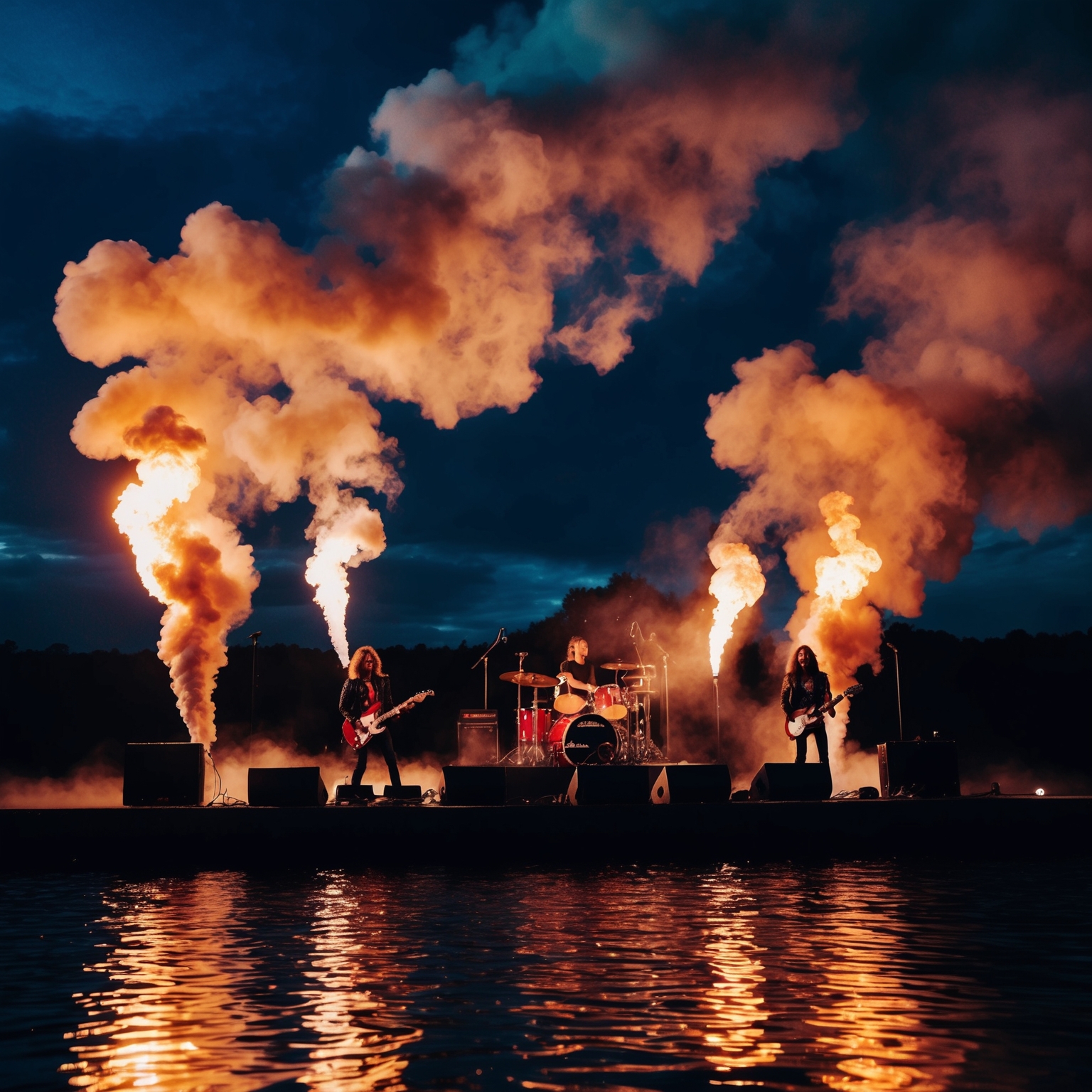 Exploring Themes and Messages
Exploring Themes and Messages
“Smoke On The Water” by Deep Purple is more than just a classic rock anthem; it’s a vivid depiction of a real-life event. The song’s primary theme revolves around an unexpected tragedy that struck while the band was preparing to record their album in Montreux, Switzerland. The lyrics recount the infamous fire at the Montreux Casino set ablaze by a fan with a flare gun during a Frank Zappa concert. This tangible, visual theme resonates with audiences as it conveys a sense of chaos and loss, yet also resilience, as the band pivots to finish their project.
Narrative and Storytelling
The storytelling in “Smoke On The Water” is direct and descriptive, narrated in the first person by the band’s members. This personal recounting gives the song an immersive and authentic feel. The straightforward narrative creates a powerful connection, as listeners can almost visualize the incident through the concise imagery presented in the lyrics. This approach enhances the song’s overall impact, making it not just a recount of events but a lasting piece of musical history.
Literary Devices and Emotional Impact
The artistic use of literary devices such as imagery and repetition plays a crucial role in enhancing the song’s lyrical quality. The recurring line, “Smoke on the water, a fire in the sky,” employs vivid imagery, painting a haunting picture that lingers in the listener’s mind. These repeated lines drill into the emotional core of the song, intensifying the atmospheric tension and underscoring the gravity of the event. The language is accessible yet impactful, using simple terms to craft a narrative that evokes a profound sense of drama and urgency.
Cultural and Social References
By mentioning prominent figures like Frank Zappa and referencing the grand Montreux Casino, the song not only captures a moment in rock history but also immerses itself in cultural depth. These references offer layers of relatability and invite audiences to connect with the story, either through their understanding of the music scene of the early 1970s or the wider context of rock and roll culture.
Comparative Analysis with Other Works
When compared to other Deep Purple tracks, such as “Highway Star” or “Child in Time,” “Smoke On The Water” stands out for its narrative focus on real events rather than abstract or fantastical themes. This approach is somewhat unique in their discography, often characterized by a blend of fantasy and introspection. The raw storytelling not only sets it apart but also solidifies its iconic status in rock history.
Fan Interpretations and Insights
Fans have long embraced “Smoke On The Water” not just for its legendary riff, but also for its lyrical homage to a pivotal moment in music history. Some interpretations see the song as a celebration of overcoming adversity, reflecting the band’s determination to continue their work despite unforeseen setbacks. This durability, captured through fan discourse and interpretations, has helped maintain the song’s enduring popularity.
🎸 Did you know Smoke on the Water was inspired by a real casino fire during a Frank Zappa concert? Talk about a blazing hit! 🔥🎶 #DeepPurple #RockTrivia #MusicHistory #EpicRiffs https://bit.ly/3NZcBli
Click to Tweet

